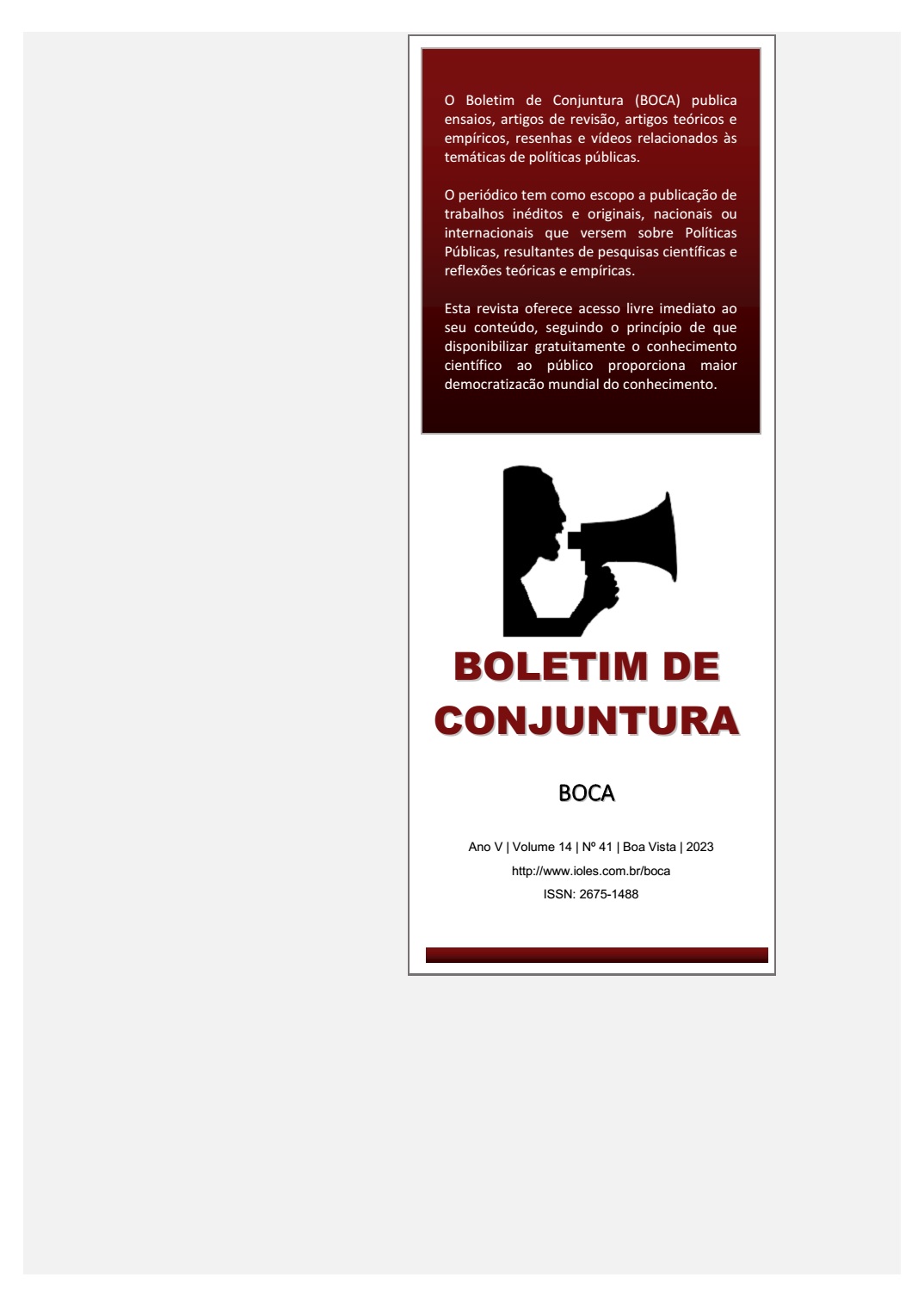REFUSAL FOR ONCOLOGICAL TREATMENT OUTSIDE THE MUNICIPALITY OF RESIDENCE: ANALYSIS OF THE IMMEDIATE REGION OF VIÇOSA
Main Article Content
Abstract
Cancer is one of the most serious public health problems in Brazil, appearing as the fourth leading cause of premature death. The study aimed to identify the sociodemographic profile of patients in the immediate region of Viçosa-MG who did not undergo treatment because they were outside their city of residence. It also sought to verify the existence of a correlation between the variables year and number of people who have stopped taking the treatment. This is a longitudinal and descriptive study with probalistic sampling of cancer patients registered in the Hospital Cancer Records (RHC) system of INCA between 2010 and 2019. The data revealed that patients who did not undergo treatment due to being outside the households are mostly in Viçosa-MG, they are men, married, with incomplete primary education and aged between 20 and 59 years. Furthermore, it was found that as of 2014 the number of people who stopped undergoing treatment increased. In this sense, it was concluded that there was a positive correlation between the variables year and number of people who stopped undergoing treatment for being outside. Therefore, the need to know the profile of patients who refuse to undergo treatment is emphasized, in order to identify the factors that are associated with this refusal, in order to propose measures and/or public policies that can support them and prevent discontinuation of cancer treatment.
Article Details

This work is licensed under a Creative Commons Attribution 4.0 International License.
Copyright (c). Conjuncture Bulletin (BOCA)
This work is licensed under a Creative Commons Attribution 4.0 International License.
References
AFFONSO, P. L. G. Princesas-guerreiras, super-heróis e maratonistas em castelos de areia: cuidado e reconstrução de sentidos em narrativas de adultos jovens com câncer (Dissertação de Mestrado em Saúde Pública). Rio de Janeiro: Fiocruz, 2020.
BARBOSA, Y. O. et al. “Acesso dos homens aos serviços de atenção primária à saúde”. Revista de Enfermagem UFPE Online, vol. 12, n. 11, 2018.
BATISTA, D. R. R.; MATTOS, M.; SILVA, S. F. “Convivendo com o câncer: do diagnóstico ao tratamento”. Revista de Enfermagem da UFSM. vol. 5, n. 3, 2015.
CARLOS, C. A. L. V.; DAMIANO, K. M. T. “Diagnóstico e tratamento oncológico: Reflexão acerca das mudanças na vida do paciente e de sua família”. Boletim de Conjuntura (BOCA), vol. 13, n. 39, 2023.
DIAS, L. M. et al. “Advance: care planning and goals of care discussion: the perspectives and goals of care discussion: the perspectiver of Btazilian oncologists”. BMC Palliat Care, vol. 21, n. 165, 2022.
GOLDENBERG, S. L. “Status of men’s health in Canadá”. Canadian: Urological Association Journal, vol. 8, 2014.
GOMES, R.; NASCIMENTO, E. F.; ARAÚJO, F.C. “Por que os homens buscam menos os serviços de saúde do que as mulheres? As explicações de homens com baixa escolaridade e homens com ensino superior”. Caderno de Saúde Pública, vol. 23, n. 3, 2007.
GRABOIS, M. F. et al. “Assistência ao câncer entre crianças e adolescentes”. Prática de Saúde Pública, vol. 2, n. 47, 2013.
GUEDES, T. A.; SILVA, F. S. “Gestão de saúde pública no Brasil à luz da teoria da burocracia: Escassez de médicos especialistas e desigualdade regional de acesso”. Boletim de Conjuntura (BOCA), vol. 13, n. 37, 2023.
GUERRA, M. R.; GALLO, C. V. M.; MENDONÇA, G. A. S. “Risco de câncer no Brasil: tendências e estudos epidemiológicos mais recentes”. Revista Brasileira de Cancerologia, n. 3, 2005.
GUERRA, M. V. et al. “Magnitude e variação da carga de mortalidade por câncer no Brasil e nas Unidades da Federação, entre 1990 e 2015”. Revista Brasileira de Epidemiologia, n.20, 2017.
HAY MA, K. et al. “Disrupiting gender norms in health systems: advocatimg for change”. The Lancet, vol. 39, 2019.
INCA - Instituto Nacional do Câncer. “Estatísticas do câncer”. INCA [2020]. Disponível em: . Acesso em: 12/04/2023.
INCA - Instituto Nacional do Câncer. “Prevenção e fatores de riscos”. INCA [2019]. Disponível em: . Acesso em: 12/04/2023.
MALTA, D. C. et al. “A construção da vigilância e prevenção das doenças crônicas não transmissíveis no contexto do Sistema Único de Saúde”. Epidemiologia e Serviços de Saúde, vol. 15, n. 3, 2006.
MICLOS, S. M. S. Câncer de colo uterino: fatores que influenciam a não realização do papanicolau (Trabalho de Conclusão de Curso de Graduação em Enfermagem). Goianésia: FACEG, 2020.
CHEHUEN NETO, J. A. et al. “Perfil de pacientes oncológicos e suas opiniões quanto ao uso de medicamentos não aprovados pela Agência Nacional de Vigilância Sanitária”. HU Revista, vol. 46, n. 1, 2020.
PAASCHE-ORLOW, M. “Caring for patients with limited health literacy a 76 years-old man with multiple medical problems”. Journal of the American Medical Association, vol. 306, n. 10, 2011.
TARTAREL, P. S. “Câncer: quimioterapia x náuseas e vômitos”. Revista Médica Aeronáutica Brasil, vol. 2, n. 41, 1991.
TORRE, L. A. et al. “Global cancer incidence and mortality rates and trends-an update”. Cancer Epidemiology, Biomarkers and Prevention, vol. 25, n. 1, 2015.
WIND, M. M. et al. “Câncer de pênis: aspectos epidemiológicos, psicológicos e fatores de risco”. Brasilian Journal of Development, vol. 5, n. 9, 2019.


